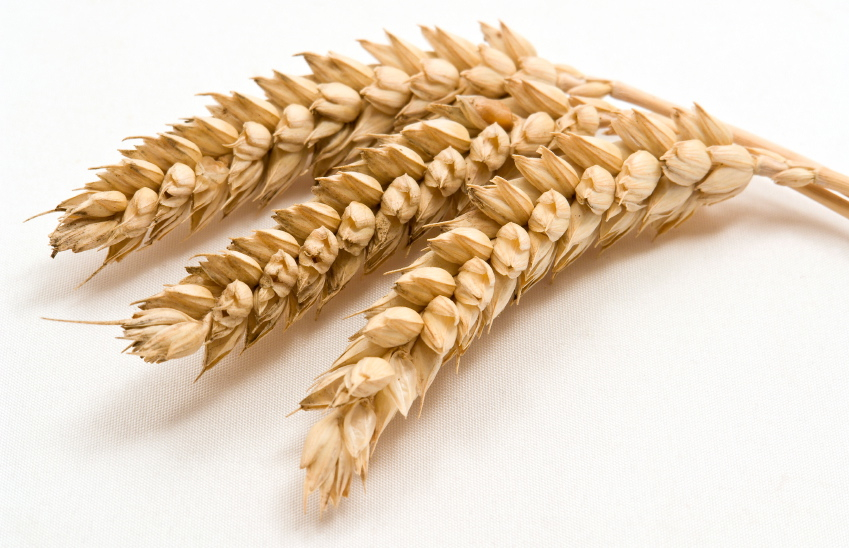
Many of our patients have heard ‘the gluten talk.’ Gluten is a protein in wheat, rye, barley, spelt and kamut, and it is causing a wide range of health problems in a growing number of people. True allergy to gluten is called celiac disease, and it is a clearly-defined but often-missed medical diagnosis. Gluten sensitivity is the term currently used to describe a condition that affects people whose health suffers when they eat foods that contain gluten – but who do not test positive for celiac disease. You need to know about this condition because it is almost certain that you or someone you care about are gluten-sensitive.
Celiac disease is an autoimmune disease in which the body perceives the gliadin protein as a threat and produces antibodies against it. These antibodies also lead to a cascade of events that alters the immune system and can lead to many other health problems.
A review of the literature concluded that approximately one percent of the population has true celiac disease, but fewer than 15% of those people know they have it.1 Only certain people can develop celiac. One gene family is believed to be required in order to develop the disease, and 95% of cases have them – they are called HLA DQ2 and DQ8. Dozens of other genes are also involved, and are related to intestinal barrier, immune cells and other parts of the process.
Diagnosis
Most commonly, people with celiac disease are diagnosed because of diarrhea, weight loss or anemia. Sometimes it is diagnosed later because of irritable bowel syndrome, mysterious rashes, hair loss or numbness, twitching or other neurological symptoms. Other problems are increasingly recognized, including type 1 diabetes, depression, obesity, chronic fatigue, thyroid problems, lymphoma and other cancers.
The official diagnosis of celiac disease is made in one of two ways. The first is blood tests for antibodies, usually anti-tissue transglutaminase but also anti-endomysial or anti-gliadin. The second, which is considered the gold standard, is a biopsy of tissue from the small intestine during an endoscopy. This shows degeneration and flattening of intestinal cells that is called villous atrophy and crypt hyperplasia.
Classical medical theory dictates that the true gold standard is a diagnostic trial of a gluten-free diet. This is the reason for the controversy. Many people who test negative for celiac disease experience major improvement in a wide range of symptoms when they stop eating gluten – and those symptoms return when they eat gluten again. They are told they do not have a problem with gluten, but they do. The reason for the confusion? These people do not have antibodies in their blood; they have them in their stool.
This fact has not yet been published in scientific journals, but it is known by thousands of physicians around the world who diagnose and treat gluten sensitivity. Unfortunately, the condition is still not recognized by the gastroenterology community; gluten sensitivity is not yet considered a ‘real disease’. This is sure to change as new research emerges. Other studies have shown that microscopic changes can be seen in the biopsied cells of people who do not have the classic findings of villous atrophy or crypt hyperplasia.
Treatment
Many food sensitivities will disappear over time or with elimination techniques, but this is not the case for gluten. At this time, the only known treatment for gluten sensitivity is a gluten-free diet. This is a major change that some people find difficult, especially those who are emotional eaters and hooked on junk food. The most obvious foods to avoid are bread, pasta, cookies, cakes, pies, donuts, cakes and muffins. There is a long list of foods and ingredients that contain gluten, such as ice cream, sausages, soups, soy sauce and malt vinegar.
But it is possible to be happy being gluten-free. Vegetables, beans and lentils, and fruits are the optimal diet for humans. Small portions of meat, chicken, fish, eggs and dairy are fine for most people unless they have other allergies. Avocadoes, nuts and seeds are better fats than butter and oils. Rice and potatoes are also safe. Gluten-free wheat substitutes include buckwheat, millet, oats, quinoa, amaranth, arrowroot, coconut, corn, rice and flax. There are many online resources for gluten-free living; a good start is www.celiac.com. If you have other dietary restrictions or feel overwhelmed by the commitment required, get help from a nutritionist.
A growing number of gluten-free foods are appearing on store shelves. These can be eaten in moderation, but should not be considered totally safe. Legally, foods that contain up to 20 parts per million (ppm) of gluten can be called gluten-free in North America. Some people will react to this small amount, and studies have shown that 50mg of gluten eaten daily for 3 months was enough to cause intestinal damage in people with celiac disease.2
People with longstanding gluten sensitivity have likely had poor intestinal health for years. This means they need to repair the gut using probiotics and possibly L-glutamine. Digestive enzymes are required to replace the enzymes that damaged intestinal cells are no longer making. If they contain peptidases, they will also help break down small amounts of gluten that are accidentally ingested. Depleted stores of vitamins and minerals are common, so it is important to increase consumption of fruits, vegetables and whole grains and take good quality supplements. In some cases, intravenous infusions of vitamins yield excellent results.
Some physicians are putting patients on a specific-carbohydrate diet. This eliminates even more grains from the diet in an effort to prevent the growth of harmful microbes in the intestine. Some patients have longstanding problems with overgrowth of bacteria and/or yeast that resulted from – or caused – their gluten sensitivity. Read more about this in the book Breaking the Vicious Cycle by Elaine Gottschall.
Why is this happening?
Gluten sensitivity is an emerging epidemic, and the reason for this is not totally clear. One hypothesis is that intestinal health has declined in our population. Overuse of antibiotics is one likely culprit; these drugs kill the healthy bacteria that are important for normal gut immune function. Another theory is that the breeding of wheat to make it resistant to cold winters have made it more difficult to digest and damaging to the gut. This may be why some of our gluten-sensitive claim they can eat bread in Europe (vacation, anyone?).
This may also be just one part of a larger problem. Many diseases of the immune system are on the rise. This includes asthma, allergies, eczema, thyroid disorders and other problems. Man-made chemicals may be a reason; we are exposed to hundreds of synthetic molecules each day that no animal or human has seen for millions of years. These may somehow alter immune tolerance, making us more sensitive and more allergic. Adopting a lifestyle that reduces your exposure to chemicals – in cosmetics, cleaning products, foods and other sources – is an important step to take for overall health.
There may be hope on the horizon. Dr Bob Anderson of Australia is working on a promising vaccine to ‘cure’ celiac disease. For now, just make the decision to go gluten-free. You may not relish the idea of life without bread, but the hard part is the 2-3 months it will take to make the change to a gluten-free lifestyle. Soon it will become second-nature. And most people feel so much better that they lose interest in gluten. Your health is worth it.
- Gastroenterolgy 2001;120:636.
- Am J Clin Nutr 2007;85:160.

